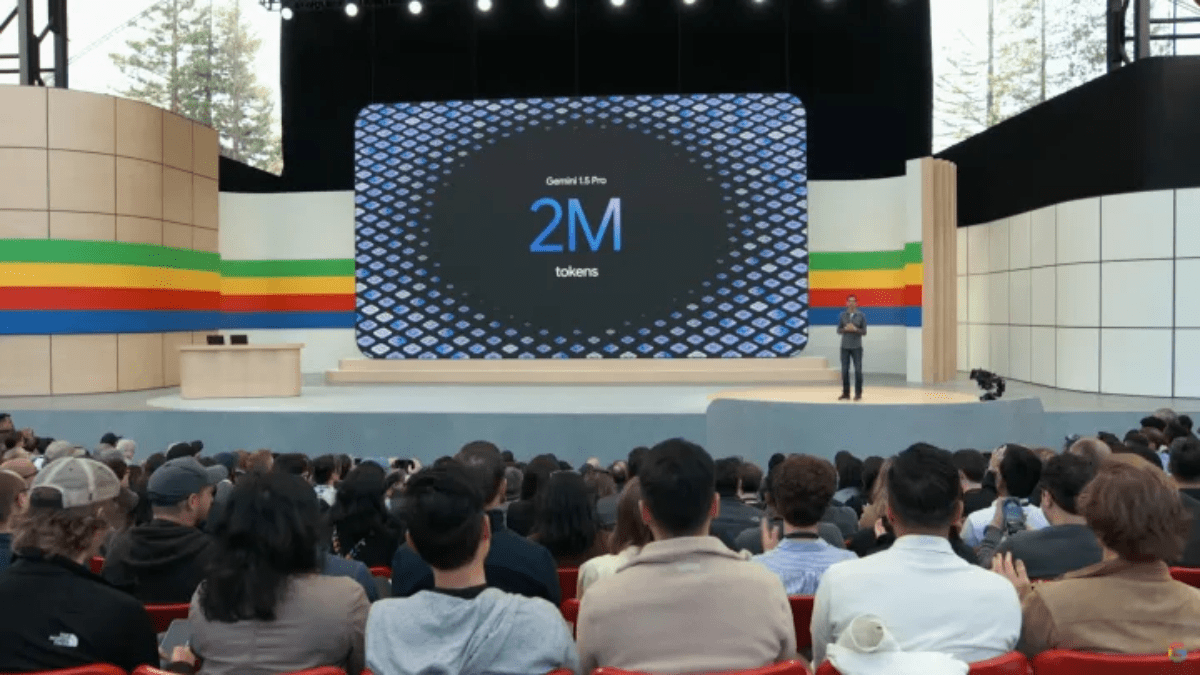Google recently announced that Gemini 1.5 Pro would increase its context window from 1 million tokens to 2 million. But what exactly is a token in the context of AI?
What is an AI token?
At its core, even chatbots need help processing the text they receive to understand concepts and communicate effectively. This is accomplished using a token system in the generative AI space, which breaks down data into manageable units for AI models.
An AI token is the smallest unit a word or phrase can be broken down into during processing by a large language model (LLM). Tokens can represent words, punctuation marks, or subwords, allowing models to efficiently analyze and interpret text. This is akin to how computers convert data into binary code for processing. Tokens help models detect patterns or relationships within words and phrases, enabling them to predict future terms and respond accurately to prompts.
How do AI tokens work?
When you input a prompt, it is too long for a chatbot to interpret as a whole. The text must be broken down into smaller pieces called tokens before the LLM can process it. These tokens are then submitted, analyzed, and used to generate a response.
The process of converting text into tokens is called tokenization. Various tokenization methods exist, differing based on factors like language and dictionary instructions. For instance, space-based tokenization splits words based on spaces between them. The phrase “It’s raining outside” would be split into the tokens ‘It’s,’ ‘raining,’ and ‘outside.’
The general conversion for tokens in the generative AI space is that one token equals approximately four characters in English, or about 3/4 of a word. Other conversions estimate that 100 tokens equate to roughly 75 words, one to two sentences equal about 30 tokens, one paragraph equals about 100 tokens, and 1,500 words equal about 2,048 tokens.
Whether you are a general user, developer, or enterprise, the AI program you’re using employs tokens to perform tasks. When paying for generative AI services, you’re effectively paying for tokens to maintain optimal service.
Most generative AI brands have rules about token limitations, capping the number of tokens processed in one turn. If a request exceeds this limit, the tool cannot complete it in a single turn. For instance, a 10,000-word article requires more than 15,000 tokens, which exceeds the limit of many LLMs.
However, LLM capabilities are advancing rapidly. Google’s BERT model initially had a maximum input length of 512 tokens. OpenAI’s GPT-3.5, running the free version of ChatGPT, has a limit of 4,096 input tokens, while GPT-4 in the paid version of ChatGPT can handle up to 32,768 input tokens. This is approximately 64,000 words or 50 pages of text. Google’s Gemini 1.5 Pro offers a standard 128,000 token context window, and Claude 2.1 has a limit of up to 200,000 context tokens, equating to roughly 150,000 words or 500 pages of text.
What are the different types of AI tokens? Several types of tokens are used in generative AI to help LLMs identify the smallest units for analysis. Here are some key types:
- Word Tokens: Entire words such as “bird,” “house,” or “television.”
- Sub-word Tokens: Parts of words, like splitting “Tuesday” into “Tues” and “day.”
- Punctuation Tokens: Punctuation marks like commas (,), periods (.), etc.
- Number Tokens: Numerical figures, such as “10.”
- Special Tokens: Unique instructions for queries and training data.
What are the benefits of AI tokens?
Tokens offer several benefits in the generative AI space. They act as a bridge between human and computer language, enabling LLMs to process large amounts of data efficiently, which is crucial for enterprises using these models. Tokens help optimize AI model performance and facilitate the inclusion of multimodal aspects like images, videos, and audio in LLMs.
Tokens also enhance data security and cost-efficiency due to their Unicode setup, which protects vital data while simplifying longer text. Their small size allows for faster data processing and improves the model’s predictive capabilities, leading to better sequence understanding over time.
As LLMs continue to evolve, tokens will play a critical role in expanding their memory and context windows, making future models even more powerful and efficient.

